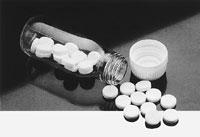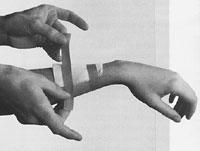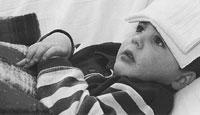Kit required
What can we do if someone at home suddenly has some mild discomfort, such as a sore throat or head? It is most normal to start simple steps to treat these discomfort at home, trying to control symptoms closely. Once these simple measures have been taken, and after evaluating the situation again in 48 hours, we can see the doctor if no improvement has occurred, or if any new symptoms have appeared, such as fever.

Meanwhile, the first aid kit has taken on a major role, especially in the first 48 hours. But always taking into account that the domestic medicine cabinet is not, in any case, a substitute for the pharmacy or pharmacy of the street, neither open (and semi-consumed), nor a store of medicines and medicines that may be expired or expired.
Kit type: where and how?
Anyone should know that the home kit should be in a cool, dry place, so the bathroom is not an appropriate place for the medicine cabinet, as changes that can occur in temperature and humidity (which are common in bathrooms) can alter the life and effectiveness of medications. It should be located at a certain height and locked to prevent children from circulating inside.
Its maintenance is as important as the contents of the medicine kit, since in its day it was prescribed by the doctor, but now no medicine that anyone takes will be saved. Any tablet or capsule that takes more than two years at home will be discarded, as well as any ointment or ointment that hardens, cracks or loses the substance it contains, even if usable at the expiration date.

The domestic kit will be properly equipped if the following recommendations are met:
- Thermometer, clamps and scissors to complete the basic tooling. The thermometer should therefore be reliable and easily readable. It can be any model or brand, normal or in berets. As for clamps and scissors, it is preferable that they are special, not used for other domestic uses and that, if there are children, they are of bare edges or tips.
- Hydrophilic cotton for cleaning and disinfection of wounds. A pack of 200 grams (the minimum is the brand) is enough.
- 96° alcohol and oxygenated water. Containers of 250 ml or 250 cubic cm per unit (quart).
- A liquid antiseptic of the type mercromine or iodine. There are color (usually red) and colorless mercromines. There are no differences in the antiseptic effect between the two, the differences are other: cleaning, fear of dirty clothes, etc.
- Gas and sterilized bandages of different measures to protect and sell the common wounds in the home. Since normally in a box come gases of the same size (ten by ten centimeters, or twenty by twenty), perhaps when for the first time we decided to form the kit, with the grains of several boxes we can make a kind of pottery or mixture, keeping all in one box.
- 1 or more rolls of smear. Currently there are so-called paper slices, hypoallergic, that allow the outlet of perspiration and that do not produce any damage in its withdrawal. There are many trade names and sizes, but the most standard smear is 2.5 cm.
- Dressings to cover wounds and scratches. There are currently several brands that offer assorted, 3 to 4 sizes, t-shirts and raincoats. For children, instead of curing the “five xentime pup, with a twenty xentime rag,” there are tirites made with characters invented today by Disney, and there is no doubt that children are much more “better” if we put them, instead of normal puppies.
- Some analgesic and anticatarral to try to palliate or palliate the first symptoms of the flu. Effervescent presentations (i.e. melts immediately after pouring the pill or tablet into a glass of water) or sold in excess, orange flavored, which are immediately dissolved with a little liquid. The brands are very numerous and you do not need a prescription to buy them in a pharmacy.
- Decongestant pills to relieve and enjoy sore throat and irritability, usually without antibiotics.
- For those who have empachos, hearts and indigestions it is advisable to have antacids. Simply salt fruit (ENO) or baking soda.
- And finally, a retouching or linimiento to use when there are muscle discomfort, twisted, etc. They can be ointments, jellies, sprays, foams, etc.
And when we go on vacation, what?

It is often necessary to keep in mind that the drugs are more swollen than those that are equipped, and in them there are many useless things (tantrizers, syringes, ointments and colirios, regardless of the antibiotics or syrups used in a previous round). It should never be used without a prescription. Self-medication is dangerous, as it can alter symptoms and make it difficult to diagnose the disease.
So, if when you go on vacation you want to take the kit to zero, the content will vary depending on where you go and the days you are going to be there. However, there are things that must always be carried: analgesics (to eliminate pain) and antipyretics (against fever); sun cream; antihistamines, to treat punctures and allergies; material to make cures (bandages, gases, spread, etc.) and also against diarrhea (but it will never be given to children without consulting the doctor).
And all that you've put in your box, have fun!
Buletina
Bidali zure helbide elektronikoa eta jaso asteroko buletina zure sarrera-ontzian











